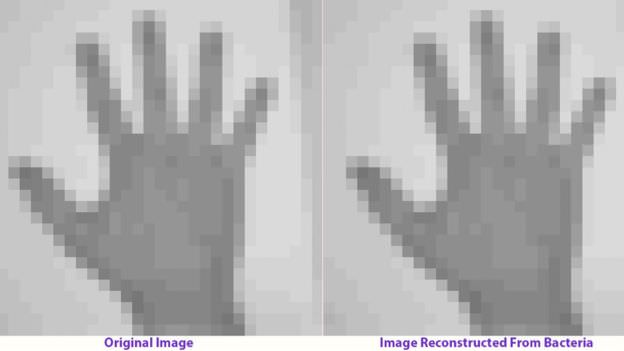https://gadgtecs.com/wp-content/uploads/2017/07/editing-dna-scientists.png
Harvard researchers embedded photos within the DNA of bacteria to check the boundaries of genome storage.
[video width="1200" height="448" mp4="https://gadgtecs.com/wp-content/uploads/2017/07/horsegif_0.gif.mp4" autoplay="on" loop="on"][/video]
The promise of utilizing DNA as storage means you may possibly save every photograph you’ve ever taken, your complete songs and audio books library, and all 236 episodes of Friends in a tiny molecule invisible to the naked eye—with plenty of room still to spare.
However what if you might be able to preserve all that digital data on you at all times, even embedded in your skin? George Church, a geneticist at Harvard University and his team think it might be attainable at some point in the future.
They have used the gene-editing system CRISPR to insert a short animated picture, or GIF, into the genomes of living Escherichia coli (E-coli) bacteria. The researchers converted the individual pixels of every picture into nucleotides, the basic structural unit of DNA.
They delivered the GIF into the living microorganism in the form of 5 frames: pictures of a galloping horse and rider, taken by Eadweard Muybridge, an English photographer who produced the 1st stop-motion video in the 1870s. The scientists were then able to retrieve the information by sequencing the bacterial DNA. They reconstructed the animation with 90% accuracy by studying the pixel nucleotide code.
The strategy, detailed in Nature, is specific to bacteria, however, Yaniv Erlich, a biologist and a computer scientist at Columbia University who was not involved in this research, says it represents a scalable method to host data in living cells that might ultimately be used in human cells.
The modern world is increasingly producing huge amounts of digital information, and scientists see DNA as a compact and enduring method of storing that data. After all, DNA from thousands or even hundreds of thousands of years in the past can still be extracted and sequenced in a lab.
[caption id="attachment_2684" align="aligncenter" width="624"]
 CRISPR was also used to store this picture of a hand into a bacteria's DNA.[/caption]
CRISPR was also used to store this picture of a hand into a bacteria's DNA.[/caption]To date, a lot of the research into utilizing DNA for storage has involved synthetic DNA made by researchers in the lab. And this GIF—only 26 x 36 pixels in dimension—represents a comparatively small quantity of data in comparison with what scientists have thus far been able to encode into synthetic DNA. It is tougher to add data into living cells than synthesised DNA, because living cells are continuously moving, dividing, changing, and dying off.
Erlich says one advantage of hosting information in living cells like bacteria is better safety. For instance, some bacteria still thrive after radiation exposure, extremely high temperatures or even nuclear explosions.
Seth Shipman, a scientist involved in Church’s lab at Harvard who led the research, says that apart from just storing data, he wishes to make use of the technique to make “living sensors” that could one day record what is going on inside a cell or around it.
Although this technique won’t be used anytime soon to store massive amounts of data into your body, it might prove to be a precious research instrument. One potential use could be to record the molecular events that drive the evolution of cell types, such as the formation of neurones throughout brain development.
“What we really wish to make are cells that encode biological or environmental information about what’s happening inside them and around them,” Shipman says.
Shipman says you could deposit these bacterial hard drives in the body or anywhere on the planet, record something you might be interested in, gather the bacteria, and sequence the DNA to see what info has been picked up along the way.
https://gadgtecs.com/2017/07/13/scientists-used-crispr-put-gif-inside-living-organisms-dna/
Comments
Post a Comment